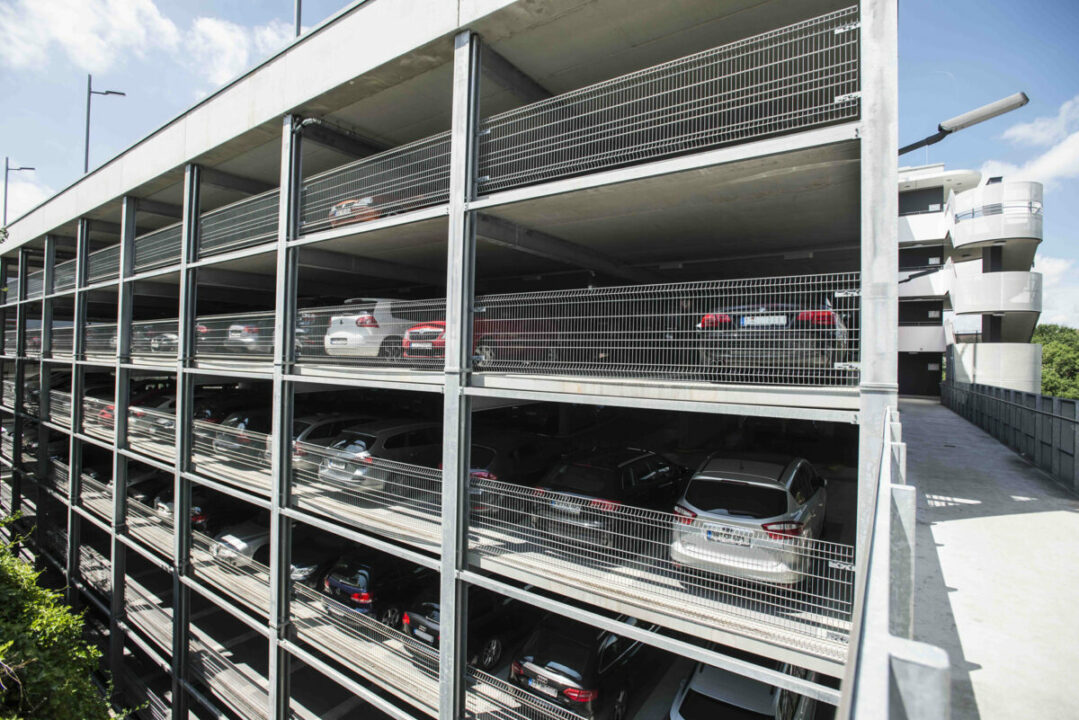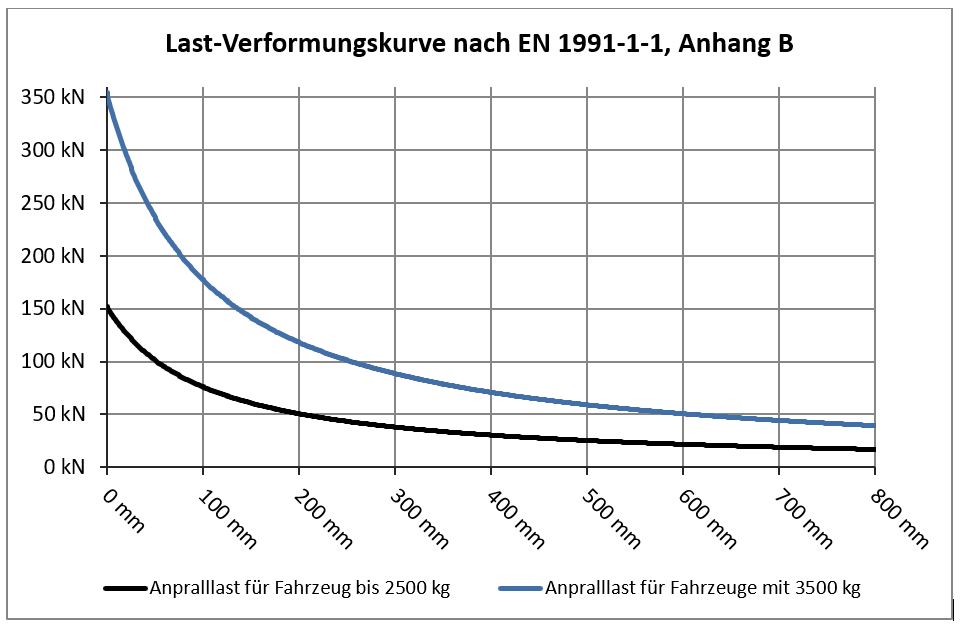Presentation of EN 1991-1-1 in relation to vehicle impact loads
EN Part 1-1: General actions on structures – Weights, deadweight and live loads in building construction; German version EN 1991-1-1:2002 + AC:2009 is part of Eurocode 1: Actions on structures and was adopted by CEN (European Committee for Standardization) on 30 November 2001.

CEN members are required to give EN standards the status of a national standard. Therefore, this standard can be considered as implemented in these countries. CEN members are the national standards bodies of Austria, Belgium, Bulgaria, Cyprus, Czech Republic, Denmark, Estonia, Finland, France, Germany, Greece, Hungary, Iceland, Ireland, Italy, Latvia, Lithuania, Luxembourg, Malta, the Netherlands, Norway, Poland, Portugal, Romania, Slovakia, Slovenia, Spain, Sweden, Switzerland and the United Kingdom.
EN 1991-1-1 lists, among other things, vertical and horizontal actions on structures, e.g. under category F for parking garages, garages and parking platforms for vehicles with a total weight of up to 30 kN. For horizontal loads, refer to Annex B in Table 6.12 of the EN 1991-1-1 standard for parking garages. This Annex B has an informative status and must be declared in the national annexes to this standard as applicable to the respective country. This applies to Austria and Great Britain.
Annex B to EN 1991-1-1 contains formulas for calculating the impact load of vehicles. For example, for a vehicle with a total mass of 2500 kg and a rigid impact system with a deformation of 0 mm, the horizontal force is 150 kN. However, this force is reduced to 25 kN for an impact protection system that allows deformations of 500 mm as an example. With a vehicle mass of 3500 kg, the impact load increases to approx. 354 kN for a rigid system, whereas the force is 59 kN with a permissible deformation of the impact protection system of 500 mm.
